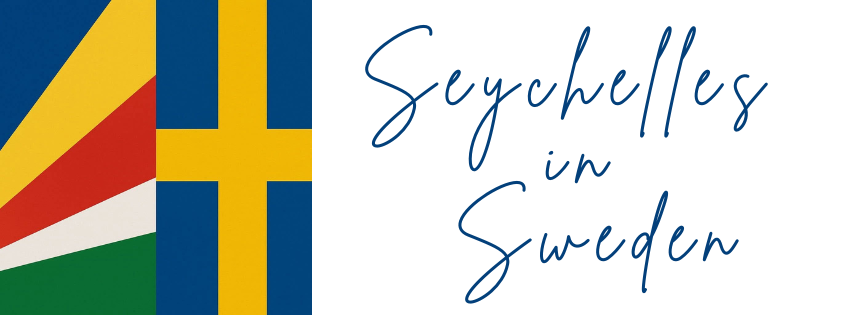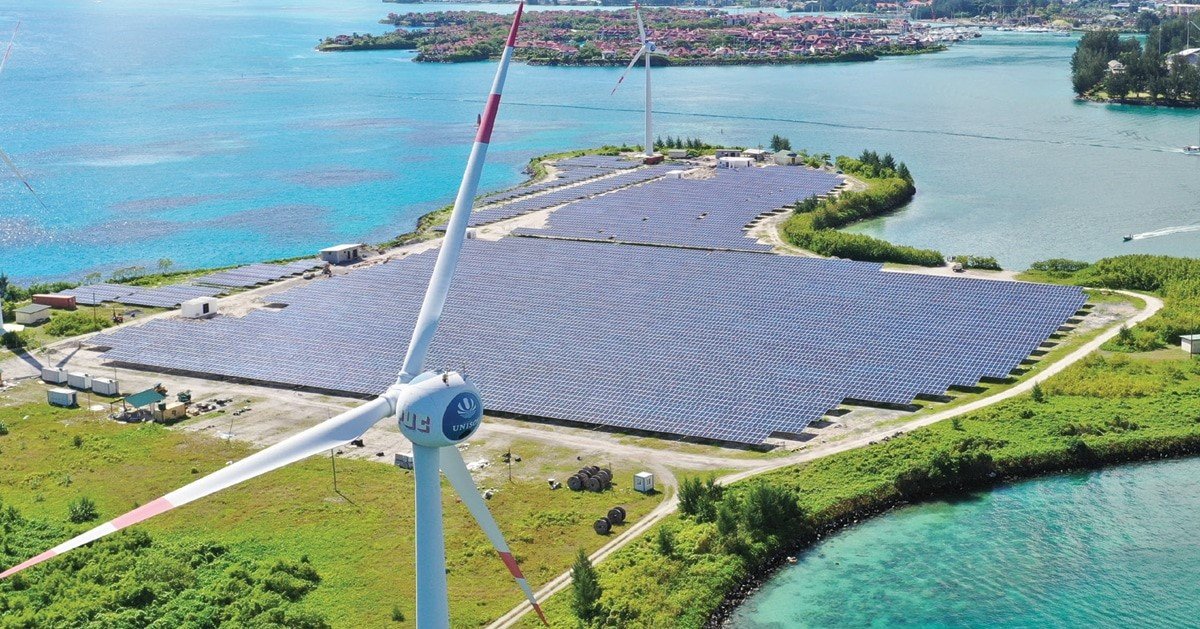Solar, Wind and Hybrid Solutions for Island Energy Security with Swedish Tech and Financing
By Salim C. Mathieu
Island nations face a unique energy challenge: small grids, heavy reliance on imported fossil fuels, high costs and increasing vulnerability to climate-induced supply shocks. For the Republic of Seychelles, securing a resilient, clean and cost-effective energy future is critical not only for economic stability but also for preserving the natural environment that drives its tourism and maritime economy. Sweden, with its long-standing expertise in renewable technologies, energy systems integration and development finance, is a natural partner for collaboration. This blog explores how Seychelles and Sweden can work together on solar, wind and hybrid systems to deliver island-ready energy security solutions.
1. Seychelles Energy Context
Seychelles currently meets the majority of its electricity generation through fossil-fuel based power plants. The high cost of imported diesel, the vulnerability to global fuel price volatility and the heavy logistics of shipping fuel to remote islands create structural challenges. According to the World Bank’s “Small Island Developing States Accelerated Modalities of Action (SAMOA) Pathway” energy brief, SIDS must move rapidly to renewable deployment, grid decentralisation and energy storage to build resilience and reduce costs. As the government advances its “National Energy Strategy 2020-2030”, the goal is to reach 70 % renewable electricity by 2030.
The transition would deliver multiple benefits: lower generation costs for consumers and businesses, reduce carbon emissions in line with Paris Agreement targets, support tourism’s green narrative and free up fiscal resources currently eaten by fuel import subsidies.
2. Sweden’s Renewable Energy Expertise & Financing
Sweden is among the world’s leaders in renewable energy deployment and innovation. Organisations like the Swedish Energy Agency (Energimyndigheten) and Swedish International Development Cooperation Agency (Sida) have pioneered financing, research and policy frameworks that support clean energy transitions both at home and abroad. Swedish companies have developed smart grid solutions, wind-solar hybrid systems, energy storage, hydrogen integration and electrification of maritime operations.
Through its experience in integrating intermittent renewables into northern grids, Sweden offers transferable lessons for islands — from grid stabilisation to demand-side management and hybrid micro-grids. Additionally, Swedish development finance institutions (including the Nordic Investment Bank and Swedish Export Credit Agency) can enable favourable financing terms, guarantees and credit lines tailored for Seychelles’ scale and context.
3. Potential Collaboration Areas
a) Solar plus Storage Systems
Seychelles has abundant solar irradiation. A mature partnership would deploy ground-mounted solar farms or rooftop systems on hotel resorts and public buildings, paired with battery storage and demand management. Sweden’s battery innovation and smart grid modules can optimise generation and reduce the need for diesel backup. A pilot project could involve a resort on Praslin or an outer island as a demonstration site.
b) Wind and Hybrid Systems
While global focus often falls on photovoltaics, islands like Seychelles may benefit from small-scale wind turbines (especially in higher terrain islands) and hybrid systems that mix wind, solar and storage. Swedish wind turbine manufactures and system integrators can adapt technology to tropical, maritime conditions. The hybrid model offers resilience: when solar falls off, wind or storage carries load, reducing reliance on fuel.
c) Micro-grid and Outer Islands
Many Seychelles outer islands still rely exclusively on diesel. A collaboration could build hybrid micro-grid systems (solar + wind + storage + diesel backup) using Swedish design standards, reducing fuel consumption, lowering logistic burdens and improving reliability. These micro-grids can serve resorts, research stations or island communities and become showcase pilots for regional replication.
d) Green Hydrogen and Marine Electrification
Sweden is at the forefront of green hydrogen and electrification of maritime transport. Given Seychelles’s maritime economy and potential for inter-island electric vessels, a longer-term collaboration could explore hydrogen-powered ferries or electrified catamarans, refuelled via renewable-powered terminals. This aligns clean energy with tourism and maritime innovation.
4. Financing Framework and Implementation Strategy
For Seychelles–Sweden energy collaboration to succeed, a clear financing and implementation framework is required:
Blended finance model: Combining concessional grants (via Sida), commercial loans (via Nordic Investment Bank) and private sector investment (Swedish clean-tech firms).
Risk-sharing instruments: Use of guarantees and insurance (via Export Credit Agency) to lower perceived risk for small island projects.
Capacity building and policy alignment: Sweden can provide technical assistance for grid regulation, pricing reform and renewable integration.
Pilot demonstration and scale-up: Start with 5 MW pilot solar + storage on Mahé, then replicate to outer islands. Use Swedish project development firms and local contractors to embed skills locally.
5. Mutual Benefits
For Seychelles:
Reduced electricity generation costs and fuel import bills.
Increased energy security and reliability, particularly for outer islands and tourism infrastructure.
Strengthened green tourism branding and attraction of Nordic visitors expecting environmental credentials.
Job creation in renewable installation, maintenance and island energy management.
For Sweden:
Export and branding opportunities for Swedish clean-tech firms in island markets.
Leadership in SIDS renewable transitions, reinforcing Sweden’s global green diplomacy.
Research and pilot site collaboration in exotic island environments enriching global data and innovation.
Deepened bilateral ties with Seychelles, opening further partnership avenues across maritime, blue economy and tourism.
6. Potential Roadmap
Feasibility Study (2025) – Joint Swedish-Seychelles team assesses solar, wind, storage potential, grid readiness and cost economics.
MoU Signing (2026) – Formal bilateral agreement between Seychelles Ministry of Energy and Swedish Energy Agency, identifying target installations and financing.
Pilot Implementation (2026-27) – Deploy a 5 MW solar + 1 MWh battery system on Mahé and one micro-grid system on an outer island.
Monitoring & Reporting (2027-28) – Capture performance, cost savings, carbon reductions and stability improvements.
Scale-up (2028-30) – Replicate across islands, integrate hydrogen/e-vessel project, establish local maintenance and training centre.
7. Challenges and Mitigation
Grid instability: Address with Swedish smart grid expertise, controls and demand-side management.
High upfront cost: Use blended finance and concessional loans to reduce hurdle.
Capacity shortage: Implement Swedish-led training programmes and embed local maintenance teams.
Import logistics: Align with Seychelles’ port upgrade and reduce dependency through local manufacture/assembly where feasible.
8. Conclusion
The collaboration between Seychelles and Sweden in renewable energy is not just a technical exercise—it is a strategic partnership that links energy security, tourism, maritime innovation and climate resilience. By combining Seychelles’ island context and Sweden’s renewable strength, the two nations have the chance to set a global example for how small island states and advanced economies collaborate effectively.

